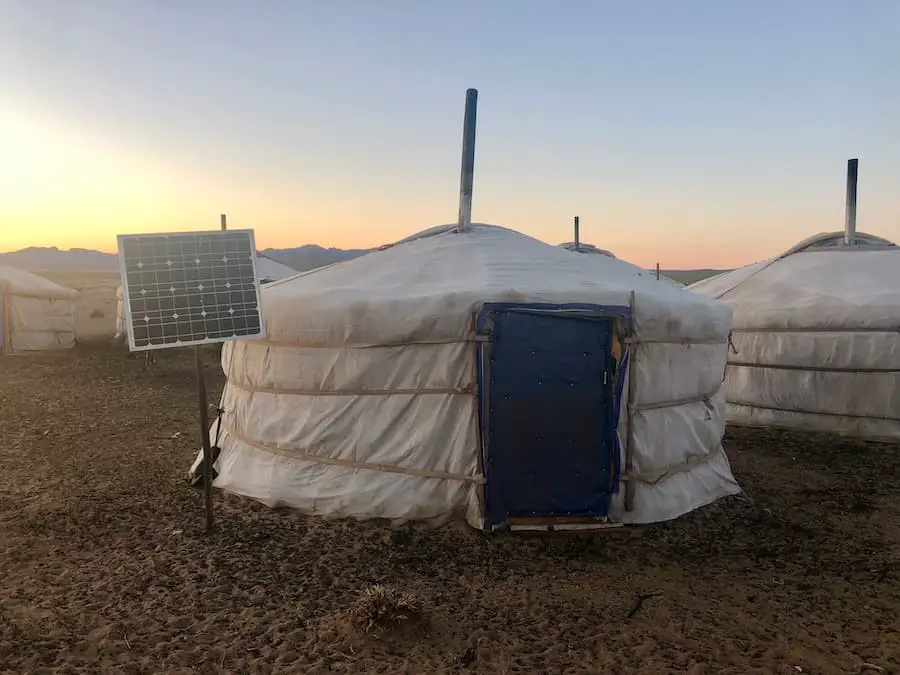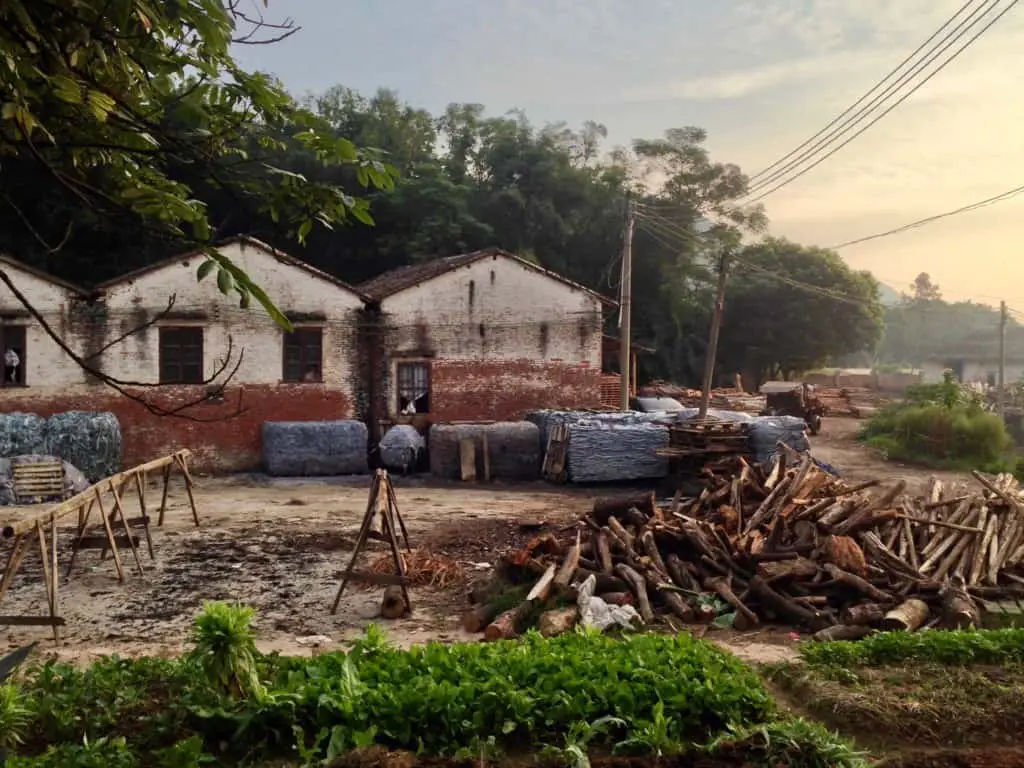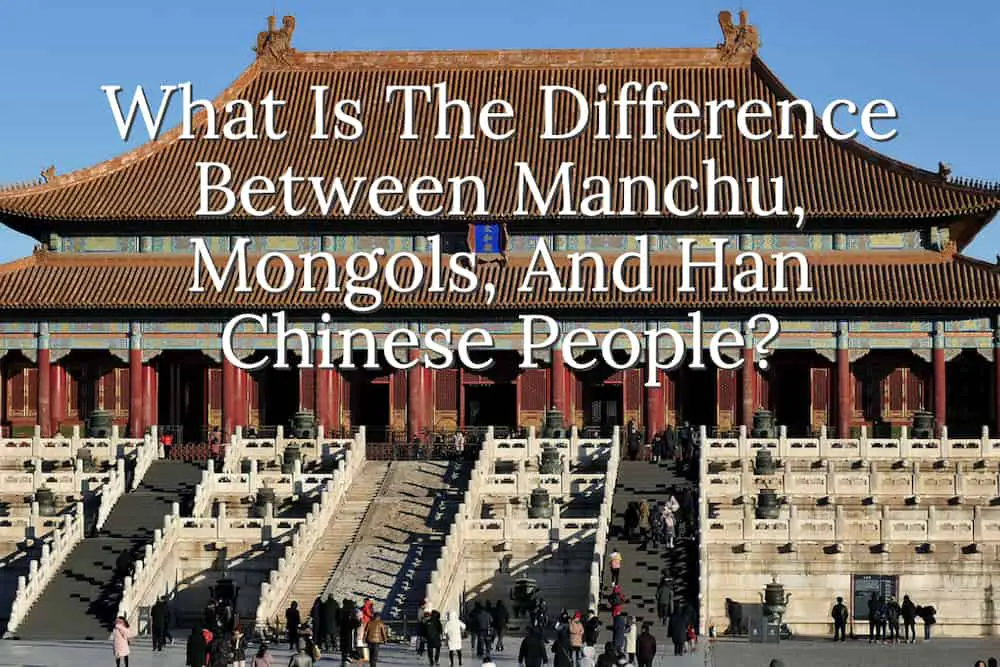When traveling around China or studying Asian history, the difference between the Manchu, Mongol, and Han Chinese ethnic groups can sometimes be confusing. They may all seem similar, but they are different ethnic groups.
The Manchu people are traditionally from Northeastern China and speak Manchurian. The Mongol people mainly live in Mongolia and in Inner Mongolia in China. They speak the Mongolian language. On the other hand, the Han Chinese are the major ethnic group in China, Hong Kong, Taiwan, and Singapore. There are many dialects of Chinese spoken, but the major dialects are Mandarin Chinese and Cantonese.
Table of Contents
- Exploring Ethnic Diversity: Manchu, Mongol, and Han Chinese Identities
- Manchu, Mongols, and Han Chinese Differences and Comparisons
- 10 Reasons Why China Has a Diverse Range of Ethnic Groups
- Frequently Asked Questions
- Related Questions
Exploring Ethnic Diversity: Manchu, Mongol, and Han Chinese Identities
Navigating the intricate ethnic tapestry of China and its history, one often encounters the distinct groups of the Manchu, Mongol, and Han Chinese. While these ethnicities may appear similar at first glance, they each possess unique cultural and linguistic identities.
The Manchu, originating from Northeastern China, have their language known as Manchurian. The Mongols speak Mongolian primarily in Mongolia and Inner Mongolia in China. In contrast, the Han Chinese form the majority ethnic group in China and in regions like Hong Kong, Taiwan, and Singapore, with Mandarin Chinese and Cantonese being the predominant dialects.
Understanding these differences provides valuable insight into the rich cultural diversity of China and its neighboring regions.
About The Manchu Chinese People
The Manchus are an ethnic minority group in present-day China. Sometimes, the Manchus are called Red Tasseled Manchus due to the ornamentation on their traditional Manchu hats. Manchuria gets its name from the Manchu people, who are mainly from northeastern China.
In present-day China, the Manchu are the fourth largest ethnic group of China; some also live in Taiwan and Hong Kong. About 0.78% of the present-day Chinese population is considered Manchu or Manchurian.
The Manchu ethnic group can be found in almost all Chinese provinces. The largest population centers of the Manchu ethnic group are in China in Liaoning, Hebei, Heilongjiang, Jilin, Inner Mongolia, and Beijing. Throughout China, there are hundreds of Manchu towns and townships.
The Manchu ethnic group is from the branch of the Tungusic people. The Manchu ethnic group has its own language, which is not the same as Mandarin Chinese but is related to the Altaic language; Manchurian is closer to Mongolian, Turkic, and Korean.
Anyone who studies Chinese history will learn that the Manchus took over the Chinese imperial throne and formed the Qing dynasty from 1644 until 1911. The famous Hollywood movie The Last Emperor shows the last Manchurian Chinese Emperor, Pu Yi, as he abdicated from the Chinese throne.
Even though Pu Yi was considered a Manchurian Chinese Emperor, he did speak much of the Manchurian language; instead, he spoke mainly Mandarin Chinese. This shows how integrated the Manchu ethnic group was among the Han Chinese population.
The Manchu are often mistaken for nomadic people or thought of as Mongols. The Manchu were not mobile, as the Mongols were into agriculture, farming, and raising animals on the farm.

About The Mongol Chinese People
The Mongol ethnic group is a Central Asian ethnic group that lives mainly on the Mongolian plateau. The Mongols all share a common Mongolian language and cultural traditions.
The Mongol people now live in two significant places: Mongolia, known as Outer Mongolia, and Inner Mongolia, or China’s autonomous region. Some Mongols can be found throughout Central Asia.
To put this into perspective, the Mongols formed most of the population of independent Mongolia. They also represent about 1/6 of the population in China’s inner Mongolian autonomous region. Several enclaves have Mongols throughout China with a high percentage in Qinghai, Xinjiang, Tibet, and some areas in northeast China where many of the Manchus live.
The Mongols are known to be nomadic people; even today, in present-day Mongolian, you can find many Mongolian nomads herding sheep, goats, and other animals. They are also known to be superb horsemen, and in many desert areas, they regularly ride camels.
Present-day Mongolia is one of the most sparsely populated countries in the world. The landmass of Mongolia is 1,566,000 square kilometers or 605,000 square miles. Yet the population in this vast landmass is just over 3 million people.
If you compare this to Inner Mongolia, there are far more Mongols living in China than in Mongolia. The Mongols are the 10th Ethnic group in China, with a population of almost 6 million people. This is almost double the population of Mongolia.

About The Han Chinese People
The Han Chinese are also known as Hanzu or Han People. Over 91% of the Chinese population is considered Han Chinese, so you can say Han Chinese is Chinese.
About 97% of the Taiwanese population is considered Han Chinese. In Singapore, about 75% of the total population is Han Chinese. In Hong Kong and Macau, about 88% of the population is Han Chinese.
Ethnic groups share ancestry, history, homeland, language (can also be a dialect), and cultural heritage. Based on this definition of ethnic groups, the Han Chinese are the world’s largest ethnic group. The Han Chinese share an ancient history that is over 4,000 years old.
There are many different spoken language dialects of Chinese. Even today, when you travel throughout China, various Chinese dialects can be spoken in the same city or province.
The two main Chinese dialects are Mandarin Chinese (the official language of China) and Cantonese (spoken mainly in Hong Kong and unofficially in Southern China). Even though both dialects are Chinese, they are very different; speaking one dialect of Chinese does not mean you can speak or understand the other.
The Han Chinese are native to modern-day China’s Yellow River Basin area. This contrasts with the Manchurians, who came mainly from Northeastern China or the Mongols from the Mongolian Plateau area.
Manchu, Mongols, and Han Chinese Differences and Comparisons
People can often confuse the Manchu, Mongols, and Han Chinese ethnic groups. When you view the table below, you can see that the Manchus, the Mongols, and the Han Chinese are different ethnic groups with other characteristics. And in particular, the Manchu and the Mongols are not the same ethnic group.
Here is a chart to show the difference between each ethnic group:
| Manchus | Mongols | Han Chinese | |
| Original Location | Northeastern China | Mongolia and Inner Mongolia | Yellow River Basin, China |
| Lifestyle | Agriculture and Farms | Nomads | Agriculture and Farms |
| Language | Manchurian | Mongolian | Chinese |
| Type of Language | Altaic Language | Altaic Languages | Sino- Tibetan Languages |
| Countries where the majority of the population lives | China | Inner Mongolia (China) and Mongolia | China, Hong Kong, Taiwan, and Singapore. |
| Principle Location within China | Liaoning, Hebei, Heilongjiang, Jilin, Inner Mongolia, and Beijing. | Inner Mongolia, Xinjiang, Qinghai, and Gansu | All throughout China |
| Population -Ethnic Group in China | 10,387,958 | 5,981,840 | 1,220,844,520 |
| Percent of Chinese Population | 0.78% | 0.49% | 91.65% |
Even though all three of these groups – Manchu, Mongols, and Han Chinese, have many similarities, they are distinct ethnic groups. What they have in common is that a large part of their population lives in present-day China.
10 Reasons Why China Has a Diverse Range of Ethnic Groups
With its vast landmass and rich history, China is not just a monolithic culture but a mosaic of various ethnicities, traditions, and languages. But what factors have contributed to this incredible ethnic diversity?
Here are ten reasons why China is home to a multitude of ethnic groups:
- Vast Geography: China’s enormous and varied landscape, encompassing everything from towering mountain ranges to expansive plateaus and dense forests, has facilitated the development of diverse communities, each adapting to their unique environment.
- Ancient Civilizations: Over millennia, several ancient civilizations and cultures thrived in different parts of China, each contributing to the rich tapestry of ethnic groups present today.
- Historical Migrations: Throughout history, various populations migrated across and settled in China. These migrations brought different ethnicities into the region, whether for trade, exploration or escape from conflicts.
- Silk Road Influence: The Silk Road, the ancient trade route connecting the East to the West, facilitated not just the exchange of goods but also cultures, ideas, and people, leading to greater ethnic integration and diversity.
- Conquests and Invasions: Over the centuries, China was invaded and, at times, ruled by foreign powers, such as the Mongols and the Manchus. These invasions introduced new cultural and ethnic elements into the Chinese melting pot.
- Maritime Exploration: China’s maritime explorations, particularly during the Ming Dynasty under Admiral Zheng He, led to increased interactions with distant cultures, adding to its ethnic variety.
- Tribal Integrations: Historically, the central Chinese kingdom often integrated bordering tribes and smaller states through diplomacy or conquest. This melding of different tribes added to China’s ethnic diversity.
- Isolation by Natural Barriers: Geographic barriers, such as the Himalayas, the Gobi Desert, and thick forests, often isolated communities, allowing them to develop distinct cultural and ethnic identities.
- Cultural Preservation: The Chinese central authority has, especially in recent decades, aimed to preserve the unique cultures of its various ethnic groups. This has led to the survival and continued prominence of diverse traditions and customs.
- Intermarriages and Alliances: Throughout history, strategic alliances have often led to intermarriages between ethnic and tribal groups, fostering cultural exchange and blending.
China’s rich ethnic tapestry results from millennia of migrations, interactions, and evolutions. Today, this diversity is celebrated and preserved, showcasing the depth and breadth of China’s cultural heritage.
With at least 56 officially recognized ethnic groups, China stands as a testament to the beauty and complexity of human civilization.
At A Bus On A Dusty Road, we talk about history, travel, life, sailing, and ex-pat living. We are all about “Living Life As A Global Citizen.” We explore social, cultural, and economic issues and travel.
We would love to have you be part of our community. Sign up for our newsletter to keep up-to-date by clicking here. If you have any questions, you can contact me, Anita, by clicking here.
Listen to our Podcast called Dusty Roads. You can find it on all major podcast platforms. Try out listening to one of our podcasts by clicking here.
Subscribe to our A Bus On A Dusty Road YouTube Channel filled with great videos and information.
Frequently Asked Questions
1. What are the Manchu, Mongol, and Han Chinese ethnic groups?
The Manchu, Mongol, and Han Chinese are distinct ethnic groups in Asia, each with its own unique culture, language, and history.
2. Where are the Manchu people traditionally from?
The Manchu people traditionally hail from Northeastern China, particularly the region known as Manchuria.
3. What language do the Manchu people traditionally speak?
The traditional language of the Manchu people is called Manchurian.
4. Where do the Mongol people mainly live?
The Mongol people mainly live in Mongolia, an independent country, and in Inner Mongolia, an autonomous region in northern China.
5. What language do the Mongol people speak?
The Mongol people primarily speak the Mongolian language.
6. Who are the Han Chinese, and where are they predominantly found?
The Han Chinese are the largest ethnic group in China, and they are also present in significant numbers in Hong Kong, Taiwan, and Singapore.
7. How many major dialects of Chinese are there, and what are they?
There are numerous dialects of Chinese, but the two major ones are Mandarin Chinese and Cantonese. Mandarin is the official language of China, while Cantonese is primarily spoken in southern China and parts of Southeast Asia.
8. Are there any cultural or religious differences between these three groups?
Yes, there are cultural and religious differences among the Manchu, Mongol, and Han Chinese, including differences in customs, traditions, and belief systems. For example, Mongols traditionally practice Tibetan Buddhism, while Han Chinese have a diverse range of religious beliefs, including Buddhism, Taoism, and Confucianism.
9. Have these ethnic groups influenced each other’s cultures over time?
Yes, over centuries of interaction, these ethnic groups have influenced each other’s cultures to some extent. For instance, the Manchu people ruled China during the Qing Dynasty, which had a profound impact on Chinese culture. Additionally, Mongol and Chinese trade and cultural exchanges have left lasting marks on both societies.
10. Are there distinct physical features that differentiate these ethnic groups?
While it’s important to avoid making broad generalizations, there are certain physical features that may be more common in each group due to their genetic backgrounds. For example, some Manchu individuals may have distinct facial features, and Mongols are often associated with a particular set of physical characteristics. However, there is a wide range of physical diversity within each ethnic group, and it’s crucial not to stereotype or make assumptions based on appearances.
Related Questions
What Are Some Lessons We Can Learn From Mongolian Nomadic Herders?
The Mongolian nomadic herders in the Gobi Desert taught me six important lessons about our community support importance. I learned some important lessons about working together as a group and supporting our neighbors while also building a support team that will always be there for us – especially in our time of need. For this to happen, we must each be willing to serve in our communities and work together.
You can discover more by reading our blog 6 Lessons On Community Support from The Mongolian Nomadic Herders by clicking here.
Why You Need a Rabies Shot Before Traveling to Southeast Asia?
Travelers to Asia, and especially Southeast Asia, should be sure to get or ensure their rabies shots are up-to-date before they travel anywhere in southeast Asia. The reason is that rabies is still a common problem in many of these areas, and getting a shot may be difficult or almost impossible to obtain if you are traveling out in the countryside.
You can learn more by reading our blog, Why you need a Rabies Shot Before Traveling to Southeast Asia, by clicking now.

